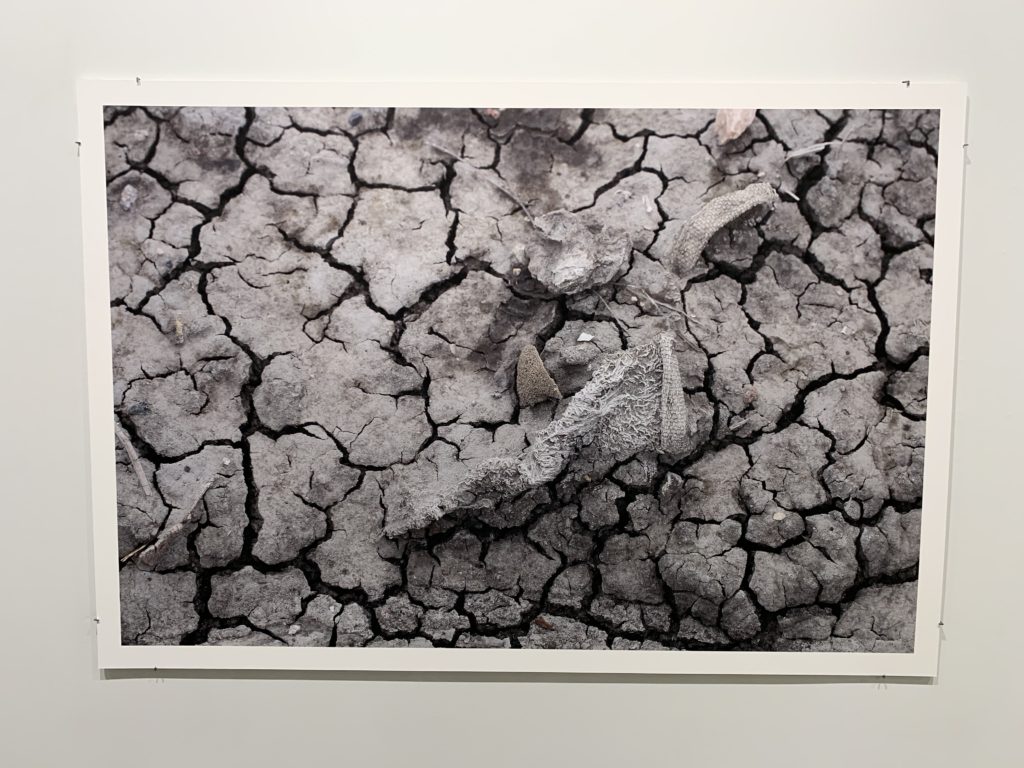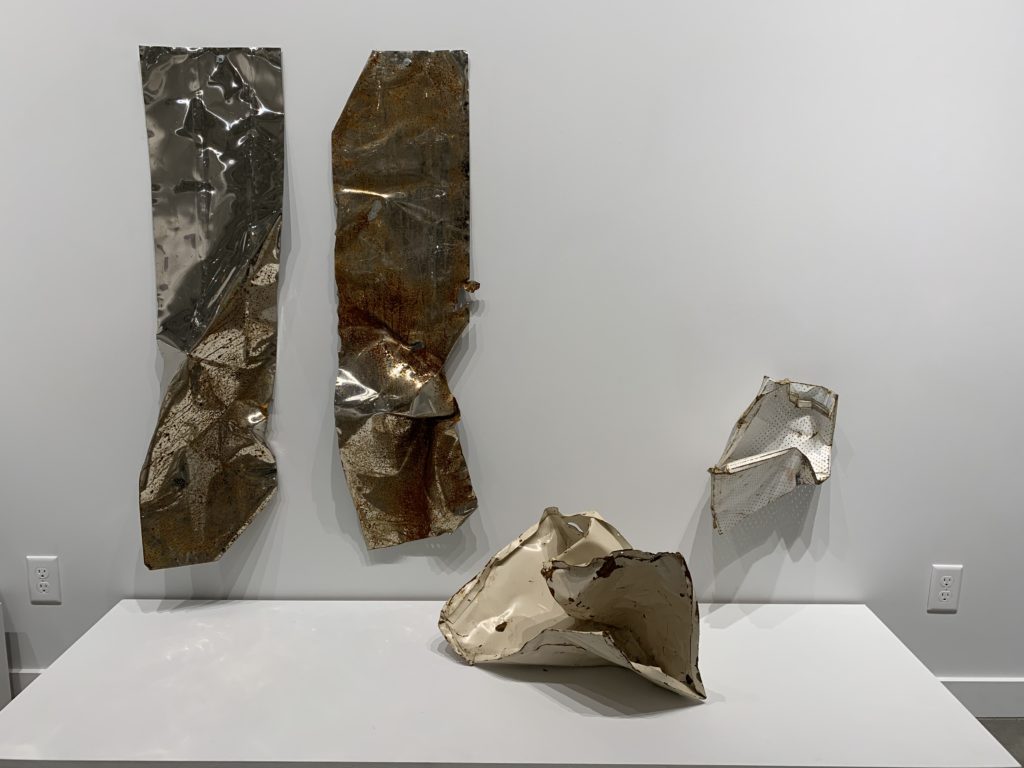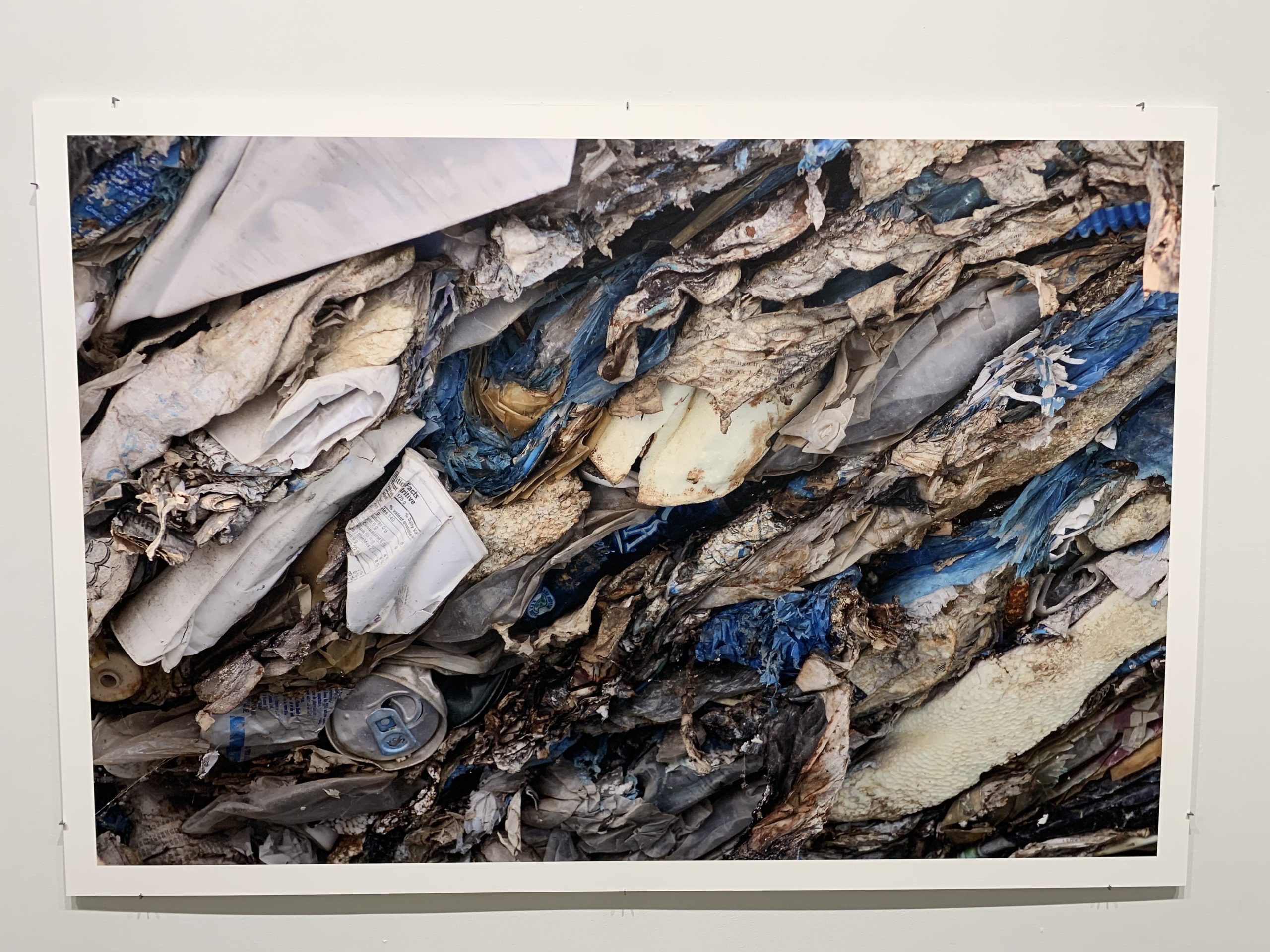On the main floor of Allard Hall, inside of the Mitchell Gallery, there is an exhibit that features nothing but trash.
The works on display, created by Leanne Olson and curated in the gallery by Carolyn Jervis, represent Olson’s observations during her year as an artist-in-residence at the Edmonston Waste Management Centre (EWMC). This residency program is made possible by the Edmonton Arts Council; their stated goal is to introduce artists to certain places of interest in the community, and then fund these individuals as they render an artistic gaze onto the chosen area. Past subjects have included the City of Edmonton Cemeteries Department, City Hall, and various community services, all covered by different Edmonton-based artists.

Olson’s residency at the EWMC places the perspective onto the waste itself. The facility handles almost all of Edmonton’s municipal refuse — the garbage, compost, and recyclable materials that we interact with and discard every single day. The works bring these items back into our gaze, and their framing creates a very deliberate denotative focus that gives the waste an aura of importance. The viewer is forced to regard the sort of materials that they routinely disregard. They see that the pervasiveness and volume of the garbage has resulted in it becoming inextricably meshed with nature, as seen in the cracked dirt of Embrace, and the corrupted river valley bank captured in #yegbrick.
Altogether, the works seem to communicate a clear message about the increasing ubiquity of waste. As a society, we have a tendency to delegate the problem of garbage, as symbolized by the centuries-old practice of simply putting it out of sight and out of mind, making it someone or something else’s problem.
However, with our ever-inflating populations and unwavering love affair with consumerism, our ability to efficiently deal with the refuse of urban centers like Edmonton has been greatly challenged. The posted description in the gallery recalls a fascinating geopolitical story from earlier this year where the Philippines sent a tanker ship filled with 1,500 tonnes of Canadian garbage back to our shores; their government no longer content to accept our monumental surplus of waste.

It is fair to say that we are entering a world where we will increasingly have no choice but to contend with waste in unprecedented ways and reevaluate its material relationship to us. This is not just supported by anecdotes and the sight of overburdened waste-management facilities — a recent World Wildlife Federation report stated that it is not unusual for a human to unwittingly ingest about five grams of microplastics every week, equivalent to around fifty credit-cards a year. This reporting is parallel to the research of MacEwan University’s own Dr. David Locky, a wetland ecologist. Dr. Locky and his team found that a cubic meter of water from the North Saskatchewan River contains up to 350 particles of plastic.
It is through these troubling realizations that we can clearly discern the importance of Olson’s work. Though it is easy to see how an art-layman may be skeptical of the value and creativity of displaying trash (the rather Duchampian Collection of Bruised Metals, a piece consisting of actual metal waste, will elicit some head-scratching among some), the semi-journalistic nature of Olson’s art lends it a sense of urgency and accusation that rings deep. By viewing her works, the viewer is hailed to consider the gargantuan ramifications of excessive waste; a boogeyman that is right on our societal doorstep. We are also called to reconsider our relationship to the materials — an activity in the exhibit asks visitors to sketch an item they’ve thrown away recently, and draw their vision of a world without excessive consumerism.
Overall, Olson’s art is a great testament to the importance of the Edmonton Arts Council, especially in regards to their residency program. The emotional and psychological significance of some issues are inevitably lost in writing — a more artistic gaze is often necessary to make an audience truly reconsider their perceptions. Olson’s work accomplishes this wonderfully.





0 Comments